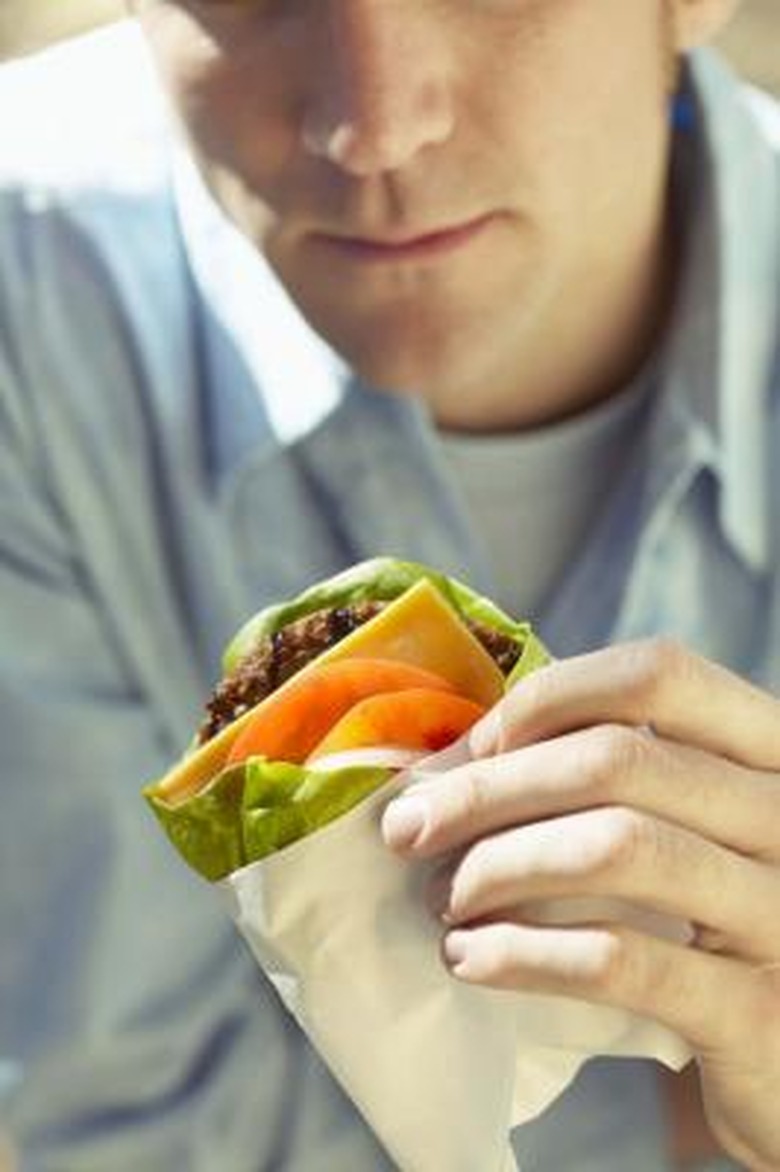What Are Long Chains Of Amino Acids Called?
Long chains, or polymers, of amino acids are called proteins (although proteins need not be exclusively amino acids). The amino acids are linked by what are "peptide bonds." The order of amino acids is determined by the order of nucleotides (the genetic "alphabet") in a gene of DNA, which in turn determine how the protein folds up and functions.
Production of Protein from Amino Acids
Production of Protein from Amino Acids
The process of linking amino acids into proteins begins in the cell nucleus. Messenger RNA (mRNA) for a gene is created using a stretch of DNA as a template. The mRNA then travels outside of the nucleus to protein manufacturers called "ribosomes." This is where protein is made. In the ribosomes, transfer RNA (tRNA) then sticks amino acids onto the mRNA. Essentially the mRNA is used as a template to build the protein.
Peptide Bond Between Amino Acids
Peptide Bond Between Amino Acids
Amino acids are joined head-to-tail in long linear polymers. Specifically, the carboxylic acid group (-CO) of one amino acid attaches to the amino group (-NH) of the next. This bond is called a "peptide bond." Such chains of amino acids are called "polypeptides."
Side Chains of Amino Acids
Side Chains of Amino Acids
The amino acids have side chains attached to the central carbon atom. These side chains have different electrostatic (bonding) characteristics. This is important in how the initially linear protein folds up when released from its mRNA template.
Amino Acid Order and Protein Folding
Amino Acid Order and Protein Folding
The shape of the protein is determined by the amino acid sequence. The bonds in a long polypeptide chain allow free rotation of the atoms, which gives the backbone of the protein great flexibility. Most polypeptide chains, however, fold into only one shape, and most of them do so spontaneously.
Side Chains and Folding
Side Chains and Folding
The folding is determined by the order of the amino acids' side chains. These side chains interact with each and the water in the cell. The polar side chains tend to twist out to face the water. The nonpolar side chains turn into the center of the protein ball, being hydrophobic (disliking water). The distribution of polar and nonpolar sites is therefore one of the most important factors governing the folding of the protein.
Number of Amino Acids Combinations
Number of Amino Acids Combinations
20 amino acids are used to make proteins. While there are 20^n different polypeptides that are n amino acids long, a very small fraction of the resulting proteins would be stable. Most would have numerous shapes with near-equivalent energy levels. Being able to change shape easily to adopt a different energy level, they would therefore not be stable enough to be useful to the organism. One amino acid in the wrong place can therefore render a protein useless. Therefore, most mutations in DNA don't benefit the organism. Only through a tremendous amount of trial and error are useful proteins evolved.
References
- Molecular Biology of the Cell; Alberts et al.; 1994
- Chemistry; Raymond Chang; 1984
Cite This Article
MLA
Dohrman, Paul. "What Are Long Chains Of Amino Acids Called?" sciencing.com, https://www.sciencing.com/long-chains-amino-acids-called-5494916/. 24 April 2017.
APA
Dohrman, Paul. (2017, April 24). What Are Long Chains Of Amino Acids Called?. sciencing.com. Retrieved from https://www.sciencing.com/long-chains-amino-acids-called-5494916/
Chicago
Dohrman, Paul. What Are Long Chains Of Amino Acids Called? last modified March 24, 2022. https://www.sciencing.com/long-chains-amino-acids-called-5494916/
